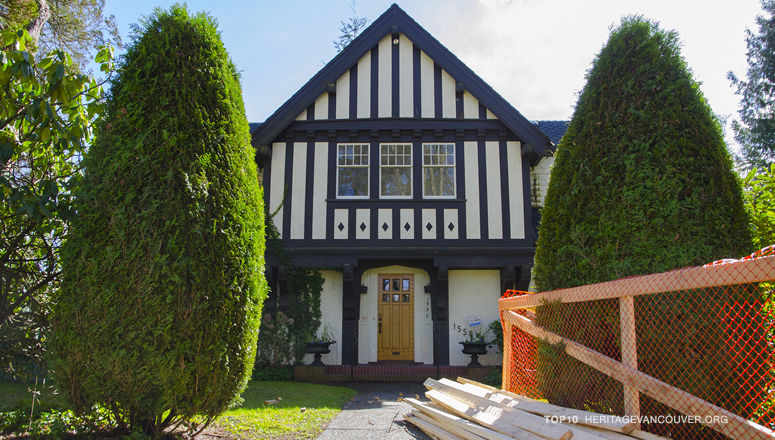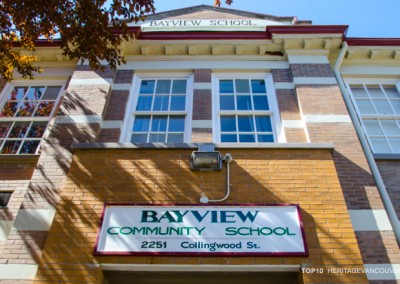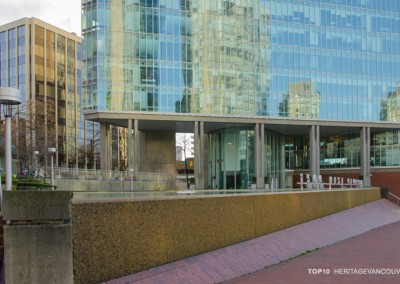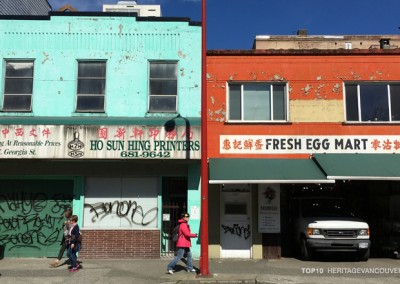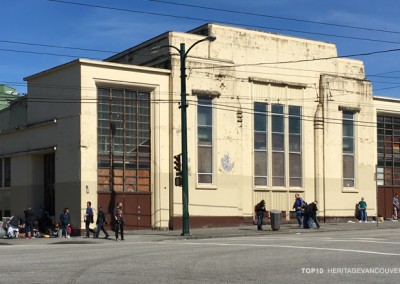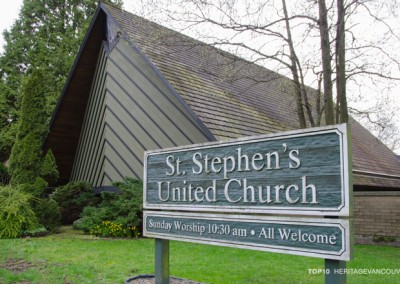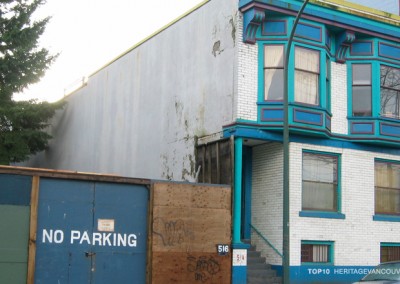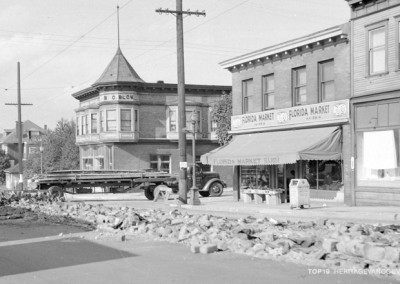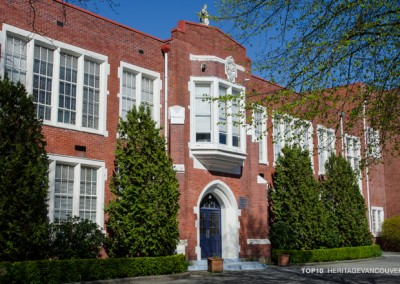The continued demolition of an extraordinary number of irreplaceable “character homes” in favour of new houses is resulting in higher housing costs and a decline in quality of life in many of our neighbourhoods.
Fred Townley and Robert Matheson were Vancouver architects who were highly active in designing outstanding Anglo-American residences “between the wars.”
Only 63 Townley & Matheson homes remain in Vancouver, and their exceptional design for 1550 West 29th Avenue (1922) – the “Electric Model Home”– faces imminent demolition [see May 13, 2016 update below].
Unless immediate action, such as downzoning, is taken, Vancouver faces the obliteration of character homes from between the two World Wars and the loss of the legacy of Townley & Matheson’s exceptional Anglo-American style homes.
Threat
What is the threat to Townley & Matheson homes?
Vancouver character houses continue to be torn down at very alarming rates in neighbourhoods like Dunbar, Kerrisdale and Point Grey. Despite the creation of the First Shaughnessy Heritage Conservation Area, which has helped to stay the tide there, the City still issued almost 1,000 demolition permits in 2015. This is about three times the number issued by the City of Toronto.
Unfavourable zoning bylaws allow for greater height and floor space – turning old homes into “demo bait” – and our high, ever-rising land prices have resulted in the demolition of an extraordinary number of irreplaceable character homes no matter their condition, or value to the community in a neighbourhood.
The potential loss of the Townley & Matheson-designed 1550 West 29th Avenue (1922), known as the “Electric Model Home” is a stab in the heart of Vancouver. It has emerged as a lightning rod for mounting public awareness about the decline in quality of life in neighbourhoods through the community efforts of people like Caroline Adderson of Vancouver Vanishes.
Unless immediate action, such as downzoning, is taken, Vancouver faces the obliteration of character homes from between the two World Wars and the loss of the legacy of Townley & Matheson’s exceptional Anglo-American style homes.
Significance
Why are Townley & Matheson Homes significant?
Fred Townley and Robert Matheson were Vancouver-raised architects who went to the University of Pennsylvania, and brought home a fresh American influence to their interwar residential designs. There are 63 remaining houses they are known to have designed.
Townley was faithful to the American Colonial Revival styles (e.g. the Buckerfield residence at 2040 S.W. Marine Drive), while Matheson explored the fashionable French Norman style (e.g. his home at 5276 Connaught Drive, with additions and renovations by Townley & Matheson protégé C.B.K. Van Norman).
Townley built his house nearby on Avondale, and several other houses in the neighbourhood. With a rear addition by architect Dan White, this British Arts and Crafts house with steeply pitched roofs has sadly been demolished.
Townley & Matheson were designers of outstanding houses such as the Dutch Colonial Revival Kelly House (1398 The Crescent) and the Voyseyesque Hugh McLean Residence (1264 Balfour Street).
They came into further prominence in the history of Vancouver architecture with institutional and commercial design, each with their unique and local expression. Townley & Matheson’s outstanding body of work includes:
- Vancouver City Hall, a landmark heritage building
- Point Grey Secondary School, an outstanding Gothic Revival design
- Sir Alexander Mackenzie School, our only Art Deco school
- The Stock Exchange Building, currently undergoing heritage rehabilitation
- The Dick Building at Granville & Broadway, a neighbourhood Period Revival landmark
- Columbia Theatre, New Westminster, the last surviving local atmospheric theatre
Position
Heritage Vancouver’s position
Heritage Vancouver encourages the City of Vancouver to consider a moratorium in all Residential Single-Family (RS) Zones on the demolition of pre-1940s houses so that the character of houses proposed for demolition can be properly assessed.
We also believe that the introduction of incentives for retention is essential, such as reduced application fees and additional allowable density for retention projects, and encouragement for the reuse of existing heritage wood doors and windows.
The City should also consider implementation of a major demolition / landfill fee on houses of 2500 ft2 or larger, and a higher fee for houses over 5,000 ft2 to provide a strong incentive for character building retention as part of the ‘greenest city’ mandate.
Actions
What you can do
We strongly encourage the citizens of Vancouver to:
- Write a letter to Mayor and Council to express that the City should consider a moratorium in all Residential Single-Family (RS) Zones on demolition of pre-1940s homes to provide a grace period for assessing their historic character.
- Write a letter to the City of Vancouver to express that more measures should be brought forward to help retain character houses and their features and materials (e.g. increased landfill fees for demolition).
- Participate in the upcoming Single Family Character Zoning Review that will be conducted by the City in 2016 as the next stage of the Heritage Action Plan.
Updates
May 13, 2016: The City of Vancouver today issued a media release, granting temporary heritage protection to 1550 West 29th Avenue, known at the ‘Electric House’, as the Director of Planning has ordered a heritage inspection of the property. This is the first time a Heritage Inspection has been ordered by the City as a new tool enabled by the Heritage Procedure By-law approved by Council in September 2015. Read the Media Release
